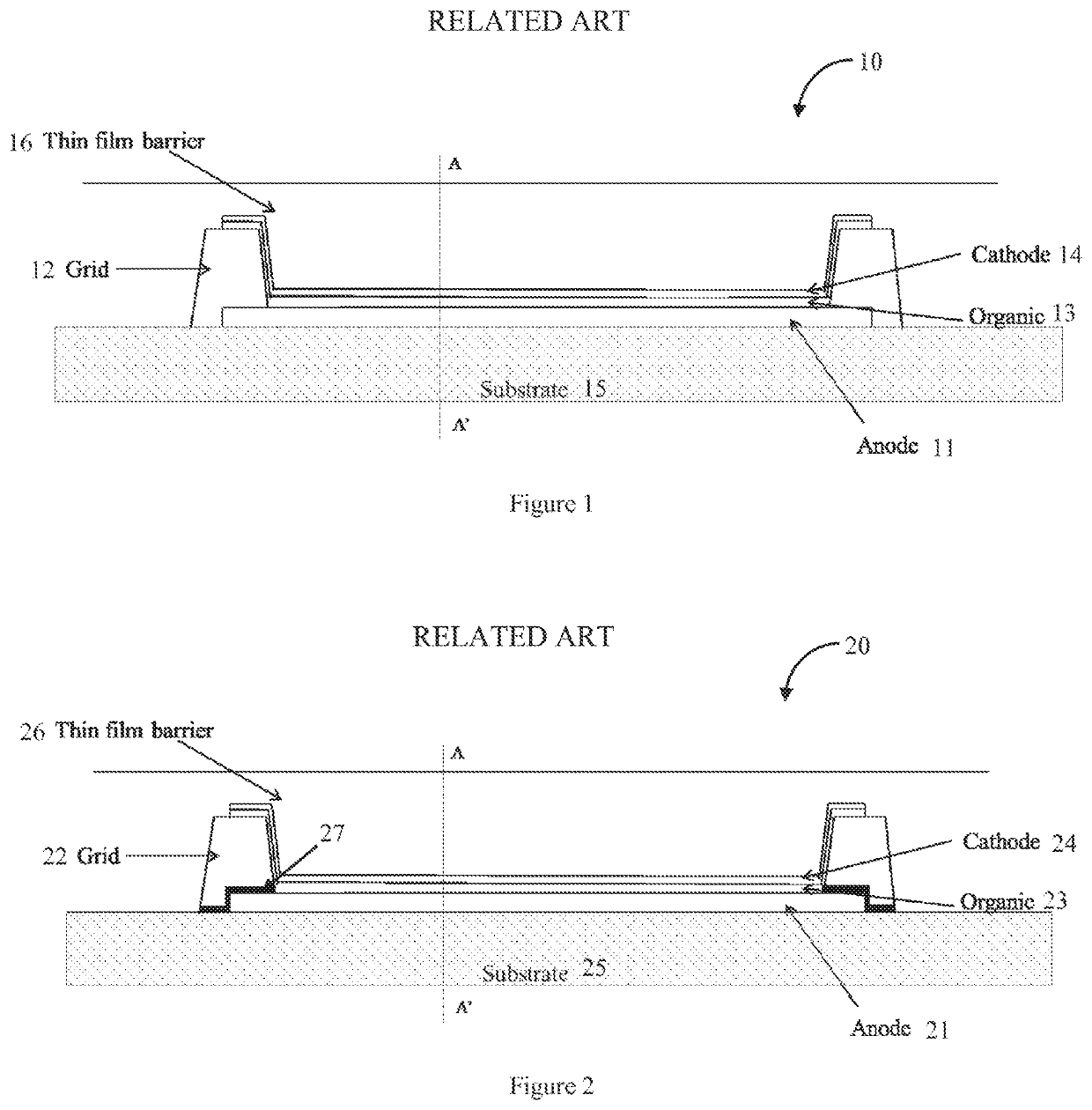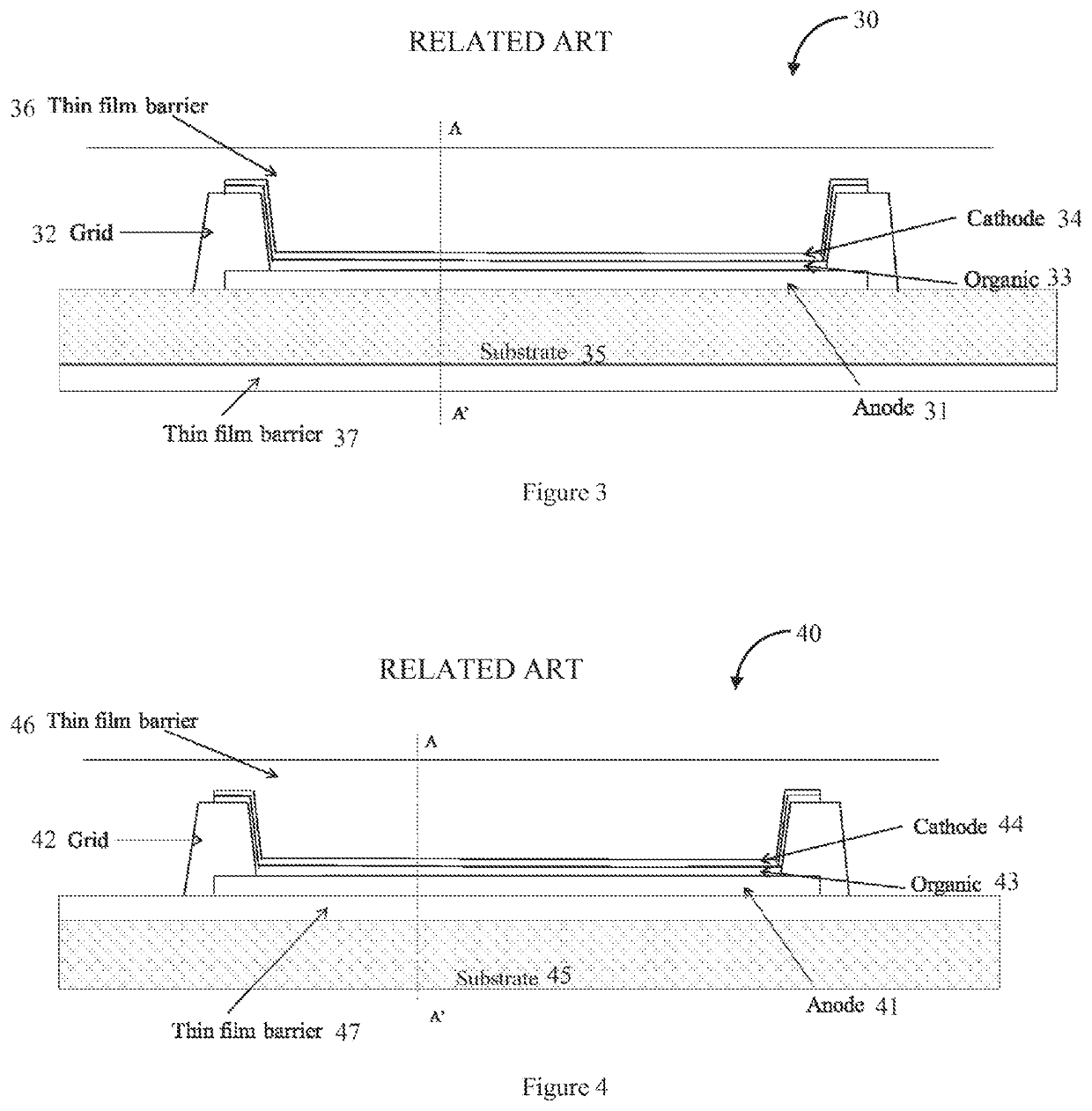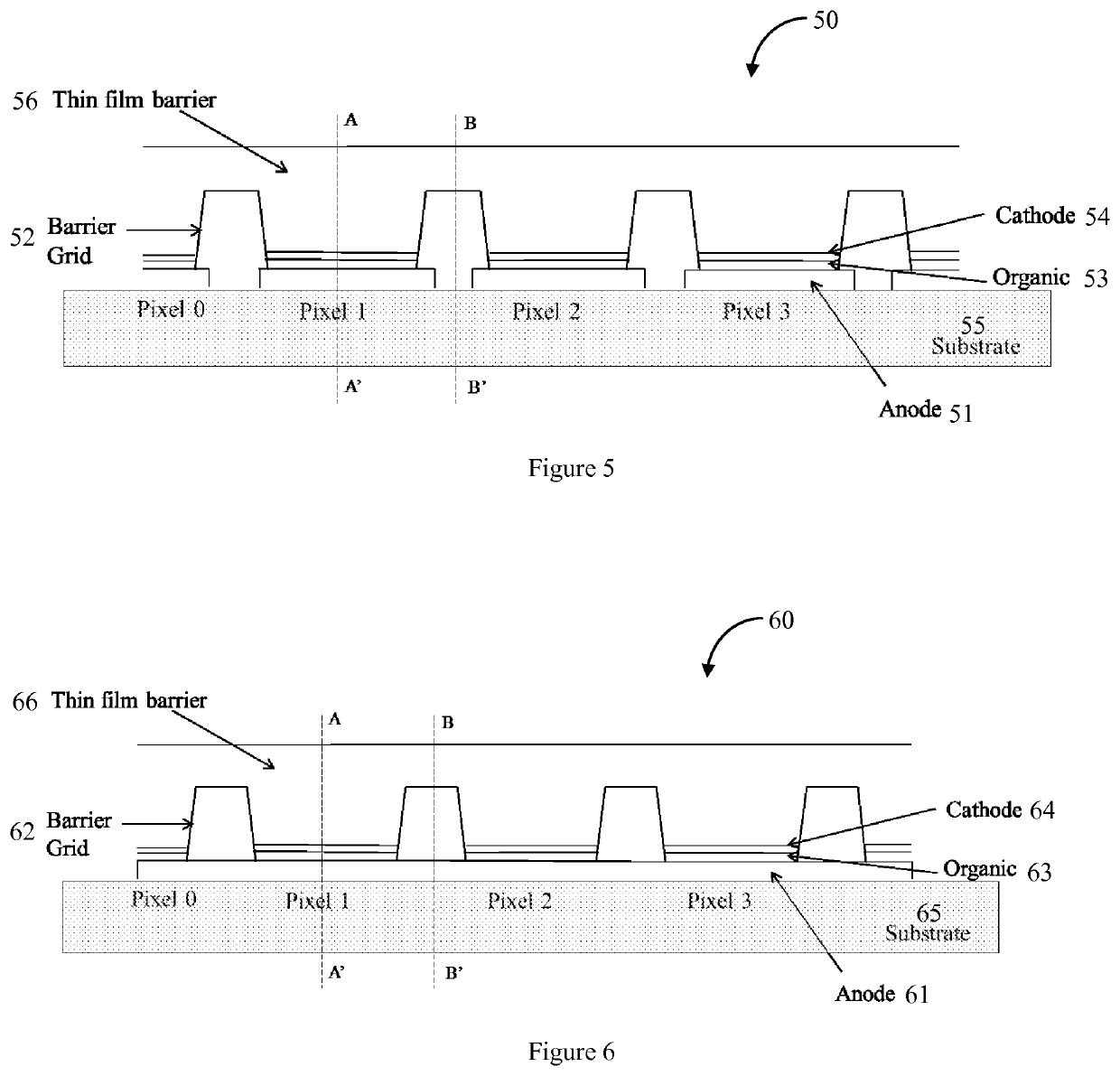Hermetically sealed isolated OLED pixels
a technology of oled pixels and oled sheets, which is applied in the direction of solid-state devices, semiconductor devices, organic semiconductor devices, etc., can solve the problems of poor moisture barrier properties, inability to use flexible oleds, and brightness non-uniformity, and achieve the effect of improving shelf li
- Summary
- Abstract
- Description
- Claims
- Application Information
AI Technical Summary
Benefits of technology
Problems solved by technology
Method used
Image
Examples
embodiment 1
rganic and Cathode Layer, and Blanket Barrier)
[0047]A cross section of one embodiment of the present invention is shown in FIG. 5. The panel 50 of FIG. 5 consists of a plurality of electrodes (anodes) 51, insulating grid 52, organic stacks 53 and second electrodes (cathodes) 54 between a substrate 55 and a thin film barrier 56. In this figure, a section of the OLED panel containing 3 pixels (Pixels 1, 2, 3) is shown. A lighting panel generally contains a plurality of these hermetically sealed pixels electrically connected to each other. The anode, organic stack and the cathode are patterned. FIG. 6 shows another variation of the current embodiment in which the anode is continuous (not patterned). The panel 60 of FIG. 6 consists of an electrode (anode) 61, insulating grid 62, organic stacks 63 and second electrodes (cathodes) 64 between a substrate 65 and a thin film barrier 66. The grid disposed over a portion of the anode is a barrier material. This barrier grid provides the requir...
embodiment 2
rganic, Cathode and Barrier)
[0054]In another embodiment of the present invention, the top barrier is also patterned to further isolate the pixels. This embodiment is shown in FIG. 11. The panel 110 of FIG. 11 consists of a plurality of electrodes (anodes) 111, insulating grid 112, organic stacks 113 and second electrodes (cathodes) 114 between a substrate 115 and a patterned top barrier 116. FIG. 12 shows another variation of the current embodiment in which the anode is continuous (not patterned). The panel 120 of FIG. 12 consists of an electrode (anode) 121, insulating grid 122, organic stacks 123 and second electrodes (cathodes) 124 between a substrate 125 and a patterned top barrier 126. The organic stacks 123, cathodes 124 and top thin film barrier 126 are patterned. The grid 122 disposed over a portion of the anode 121 is a barrier material. This barrier grid provides the required edge seal for Pixels 1, 2 and 3. The organic stack is patterned in such a way that no organic mate...
PUM
| Property | Measurement | Unit |
|---|---|---|
| thickness | aaaaa | aaaaa |
| sheet resistance | aaaaa | aaaaa |
| sheet resistance | aaaaa | aaaaa |
Abstract
Description
Claims
Application Information
 Login to View More
Login to View More - R&D
- Intellectual Property
- Life Sciences
- Materials
- Tech Scout
- Unparalleled Data Quality
- Higher Quality Content
- 60% Fewer Hallucinations
Browse by: Latest US Patents, China's latest patents, Technical Efficacy Thesaurus, Application Domain, Technology Topic, Popular Technical Reports.
© 2025 PatSnap. All rights reserved.Legal|Privacy policy|Modern Slavery Act Transparency Statement|Sitemap|About US| Contact US: help@patsnap.com



